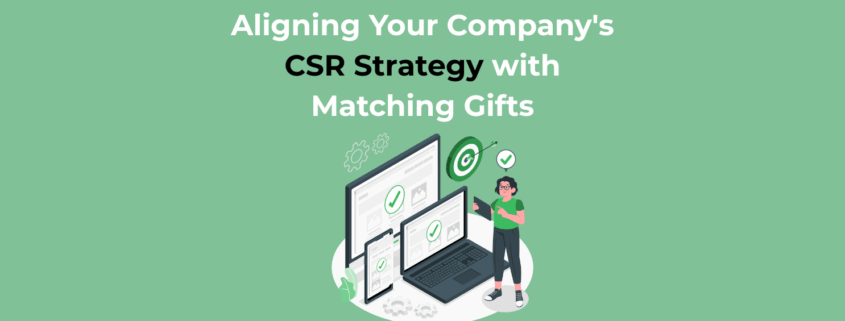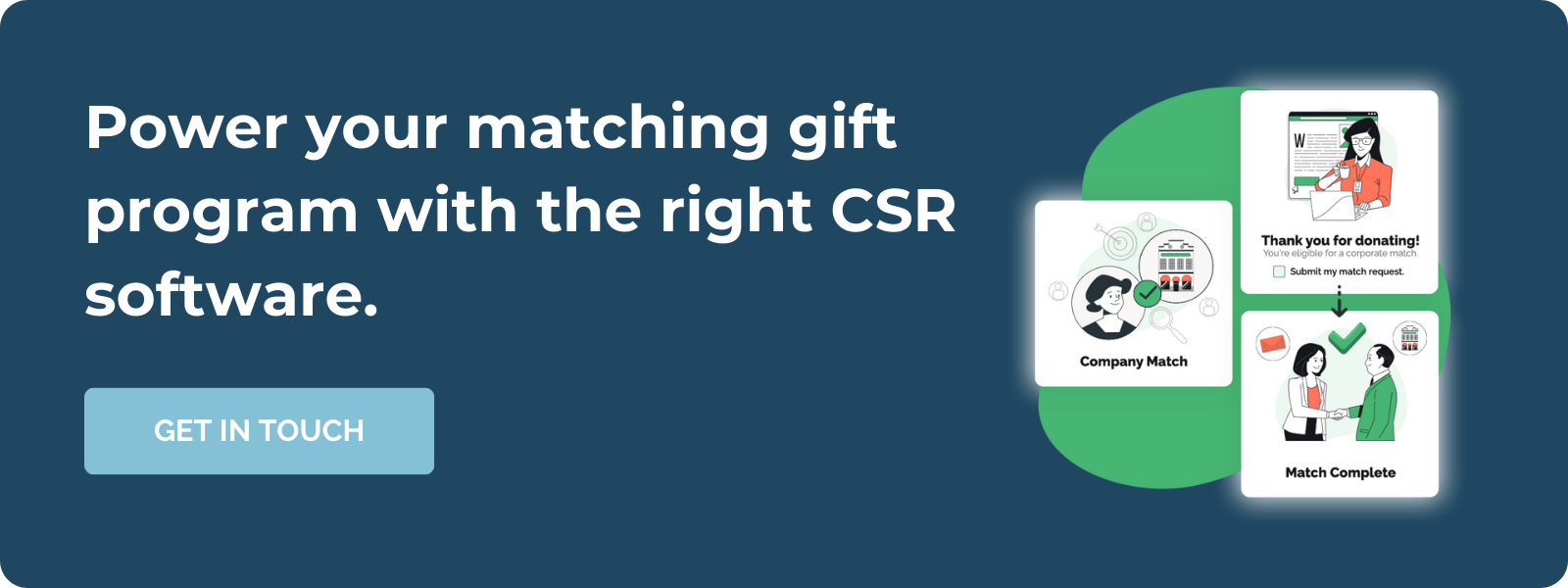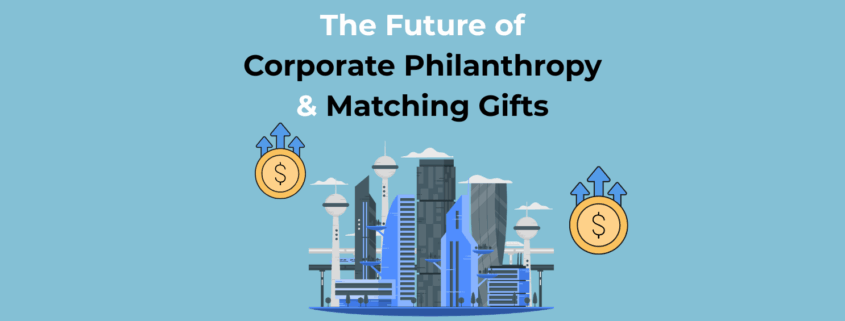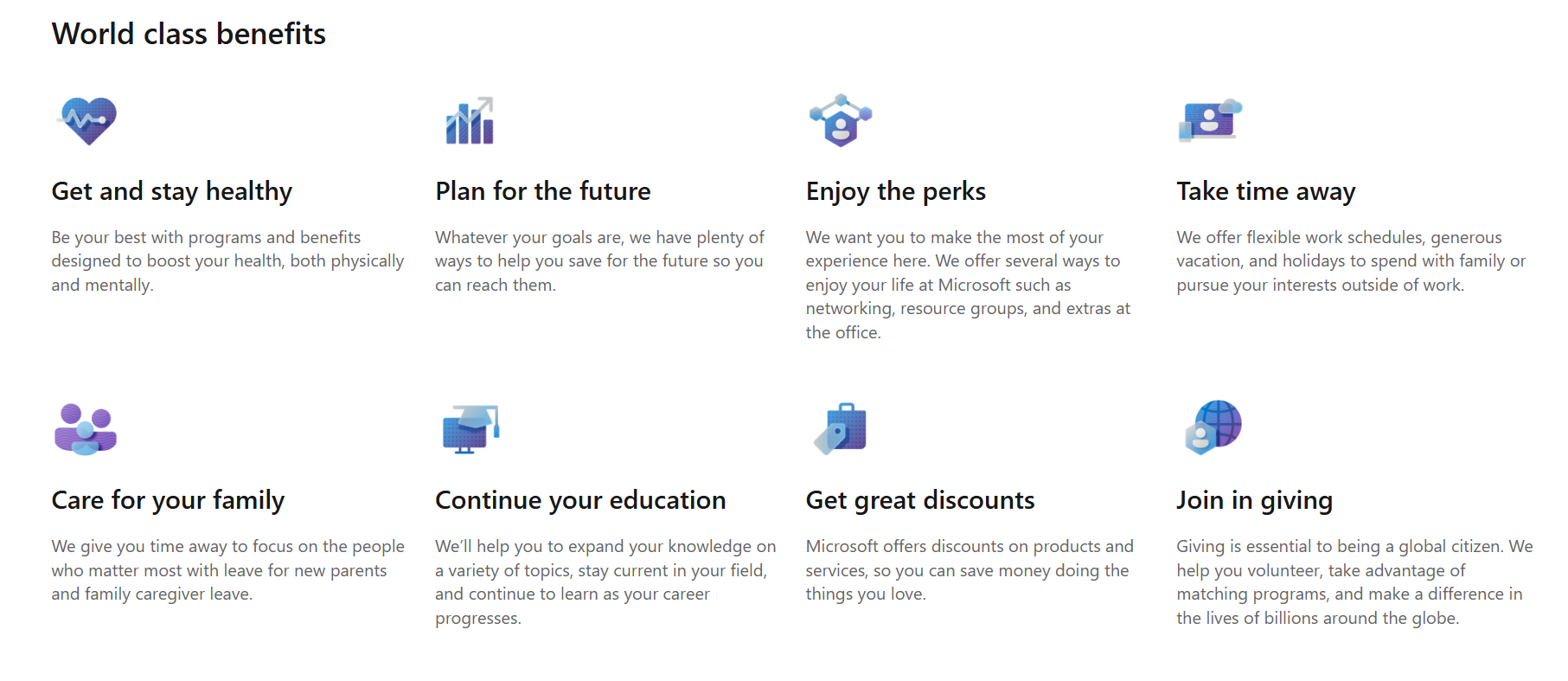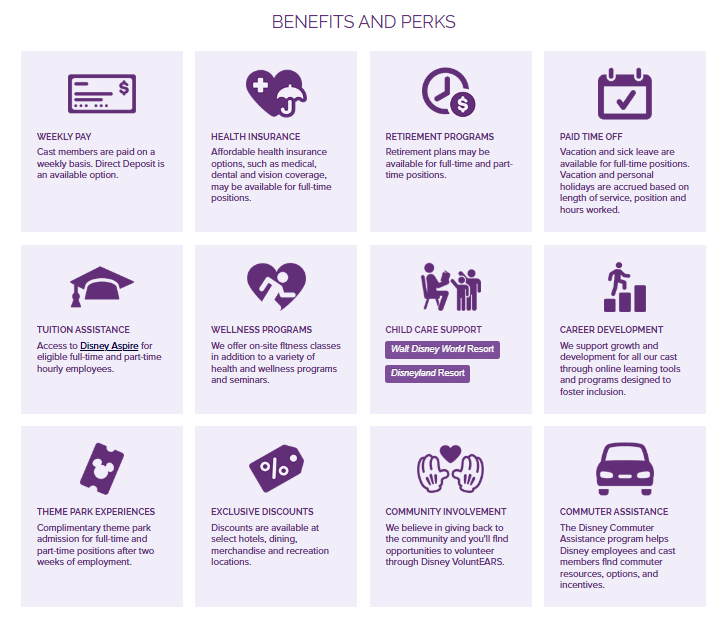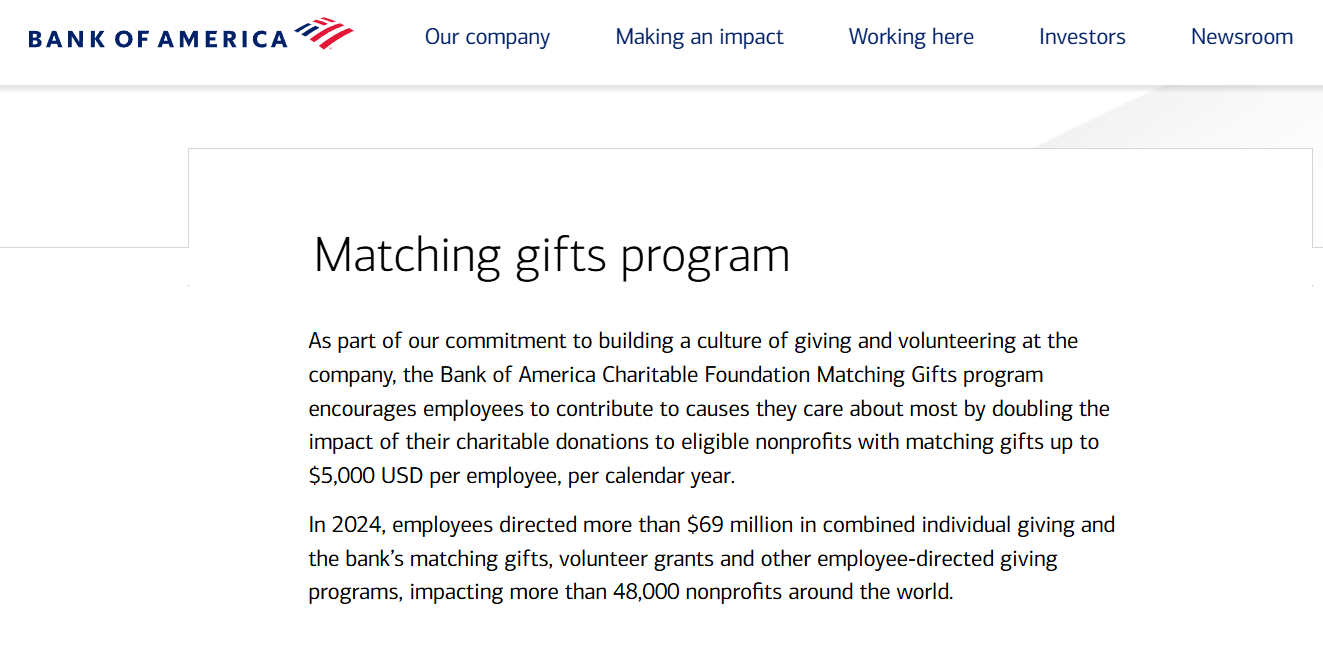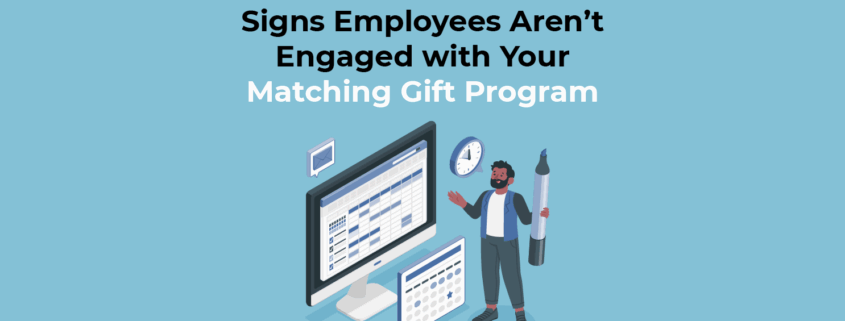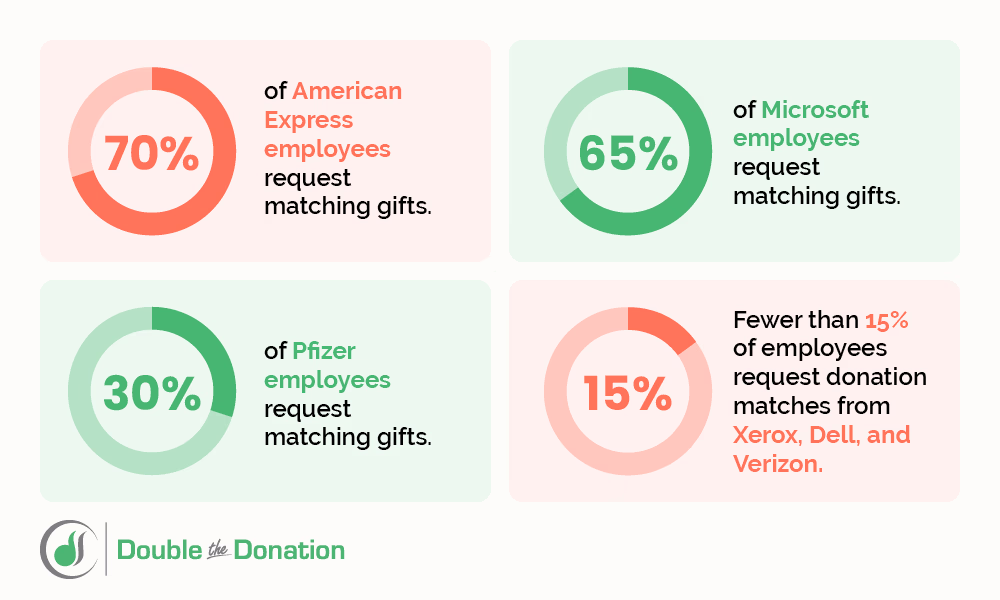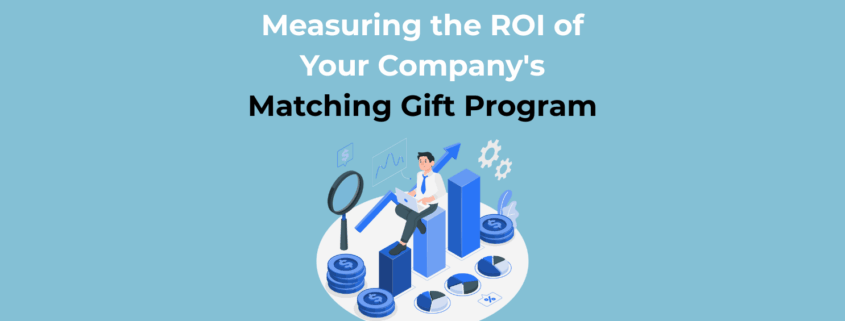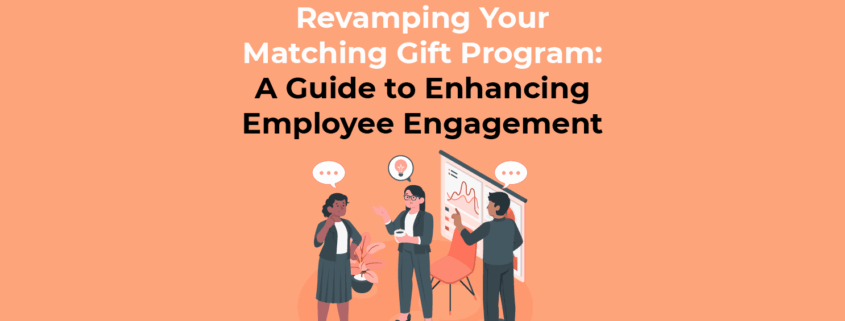Aligning Your Company’s CSR Strategy with Matching Gifts
Corporate Social Responsibility (also known as CSR) has become an essential component of a company’s brand and reputation. Many businesses now view their role in society as a key aspect of their operations, and CSR strategies are being increasingly used to drive positive impact and foster goodwill within communities. One powerful way companies can align their CSR strategy with meaningful charitable impact is through matching gifts.
By integrating matching gift programs into their CSR strategies, companies can significantly amplify the impact of employee donations while simultaneously enhancing their corporate image. This alignment offers mutual benefits: it fosters employee engagement, supports charitable causes, and strengthens the company’s position as a responsible corporate citizen. In this post, let’s explore how businesses can successfully incorporate matching gift programs into their CSR strategies to drive long-term success. We’ll cover:
- Understanding CSR and the Role of Matching Gifts
- Why Matching Gifts are a Perfect Fit for Your CSR Strategy
- How to Align Your Matching Gift Program with Corporate Values
- Best Practices for Implementing Matching Gifts in Your CSR
Corporate social responsibility has evolved significantly over the years, with many companies now using it as a core pillar of their brand. Matching gifts offer a simple yet powerful way to strengthen CSR efforts, benefiting both companies and the causes they support. This post will provide actionable insights into how businesses can align their CSR strategy with matching gifts and leverage this tool to make a lasting impact.
Understanding CSR and the Role of Matching Gifts
Corporate Social Responsibility (or CSR) encompasses a company’s initiatives to operate ethically, contribute positively to society, and ensure that its business activities align with environmental and social goals. Traditionally, CSR activities included charitable donations to nonprofits, community outreach, and environmental sustainability efforts.
However, one of the most effective ways for companies to extend their CSR goals is to offer matching gift programs for their employees. These generous initiatives encourage employees to donate to causes they care about by matching their donations, typically on a dollar-for-dollar (or more) basis. This not only increases the overall impact of donations but also encourages employees to become more involved in charitable giving.
Therefore, matching gift programs are a direct way for companies to contribute to social causes while amplifying their impact. A company not only supports the causes its employees care about but also fosters a culture of giving and social responsibility within the organization. This makes matching gifts an essential component of a broader, well-implemented CSR strategy.
Why Matching Gifts are a Perfect Fit for Your CSR Strategy
Integrating matching gift programs into your CSR strategy makes perfect sense, as they inherently align with the values of most corporate responsibility efforts. Here’s why this works:
1. Increasing Employee Engagement and Retention
Matching gifts demonstrate that a company is genuinely invested in its employees’ values and the causes they support. This type of engagement creates a strong sense of connection between the employee and the organization, enhancing loyalty and employee satisfaction. Additionally, matching gifts foster a sense of camaraderie among employees who may choose to contribute to similar causes.
Studies have even shown that employees who feel their company supports charitable causes are more likely to remain at that company long-term.
2. Boosting Charitable Contributions & Nonprofit Visibility
Matching gifts directly increase the funding that charitable organizations receive. By offering a matching gift program, companies effectively multiply the impact of each employee’s donation. This enables companies to make a significant impact on their chosen causes.
At the same time, when your company matches employee donations, the visibility of the causes they support increases. Many employees will share their experiences with their networks, raising awareness of the organizations they contribute to. This creates a virtuous cycle in which both the company and the charitable organizations gain exposure.
3. Promoting Corporate Values
When matching gift programs are aligned with the company’s CSR objectives, they allow the business to showcase its values in action. For example, if your company is committed to education, you can encourage employees to donate to schools and educational causes and match their gifts accordingly. By aligning the program with your company’s CSR values, you amplify the authenticity of your CSR initiatives.
4. Attracting Top Talent
More and more job seekers (especially in the younger generations) are prioritizing companies that demonstrate a commitment to social good. A robust matching gift program is a great way to attract talent that is passionate about philanthropy and social responsibility. This reflects positively on the company’s culture and enhances its reputation in the eyes of potential employees.
5. Stronger Brand Image
When your company supports social causes through matching gifts, it enhances its reputation as a responsible corporate entity. Customers, partners, and employees will view your company as one that prioritizes social responsibility, which can significantly impact brand loyalty and public perception.
6. Tax Benefits
Offering a matching gift program can also provide tax advantages to companies. Donations made through matching gift programs are often tax-deductible, and businesses may receive credit for their philanthropic contributions. This can create a win-win for both the company and the charities it supports.
How to Align Your Matching Gift Program with Corporate Values
To successfully integrate matching gifts into your CSR strategy, ensure your program aligns with your company’s core values and mission. Here are some key considerations:
1. Identify Key Focus Areas
Begin by identifying the causes that align with your company’s values and CSR goals. For instance, if sustainability is a significant component of your company’s mission, you might prioritize matching gifts to environmental organizations. If your company focuses on education or healthcare, those areas should be given priority in your matching gift program.
2. Communicate the Program’s Alignment
Once you’ve identified the key causes, communicate this alignment clearly to your employees. Make sure they understand that the matching gift program isn’t just a way to increase donations, but also to advance the company’s social responsibility goals. Highlight how their donations will be helping the causes that matter most to the organization.
3. Track and Report Results
To ensure your matching gift program effectively advances your CSR strategy, track matched donations and report on the results. These reports will help demonstrate the impact of your program and can be used in both internal and external communications.
Consider the following metrics:
- Total Donations Matched: Track the total amount of matched donations and the number of employees participating.
- Employee Engagement: Measure the increase in employee participation rates over time. Are employees donating more or more frequently because of the matching program?
- Cause Impact: Assess how much the matching gift program has helped the causes supported by your company. Has it led to more funding for those organizations?
- Public Perception: Gather feedback from employees and the public on how they view your company’s CSR efforts. Is the program helping strengthen your brand’s image?
These metrics can help you refine your CSR strategy and ensure that matching gifts are contributing to your larger goals. All in all, transparency in reporting helps build trust and shows that the company’s CSR efforts are making a tangible difference.
Best Practices for Implementing Matching Gifts in Your CSR
To maximize the overall success of your company’s matching gift program, consider these actionable best practices:
1. Simplify the Process
Make it easy for employees to submit their matching gift requests. Streamline the process by providing clear instructions and access to an intuitive matching gift platform or portal. The easier it is for employees to participate, the more likely they are to take advantage of the program, thereby increasing your company’s benefits.
Hint: Work with a CSR vendor platform that has matching gift auto-submission enabled to streamline the donor experience and facilitate more matches for employee donations!
2. Promote the Program Regularly
Keep matching gifts top of mind by regularly promoting the program through internal communications. Send reminders during key times of the year, such as during holiday giving campaigns or at the start of the year when employees may be making new donation decisions.
3. Provide Recognition
Recognize employees who participate in the matching gift program. Publicly acknowledge their contributions, whether through company newsletters or social media channels. Recognizing employees for their charitable actions not only boosts morale but also encourages others to follow suit.
Wrapping Up & Next Steps
Aligning your company’s CSR strategy with matching gifts is a powerful way to increase both the financial and social impact of your efforts. Not only does it boost employee engagement, but it also enhances your company’s reputation, attracts top talent, and strengthens the causes that matter to your stakeholders.
Now is the time to evaluate your existing CSR strategy and explore how matching gifts can be integrated within it. By aligning these programs with your core values and focusing on effective communication, promotion, and measurement, you can ensure your company’s CSR initiatives make a real difference.
With the right approach, matching gifts can become a cornerstone of your long-term CSR success.
